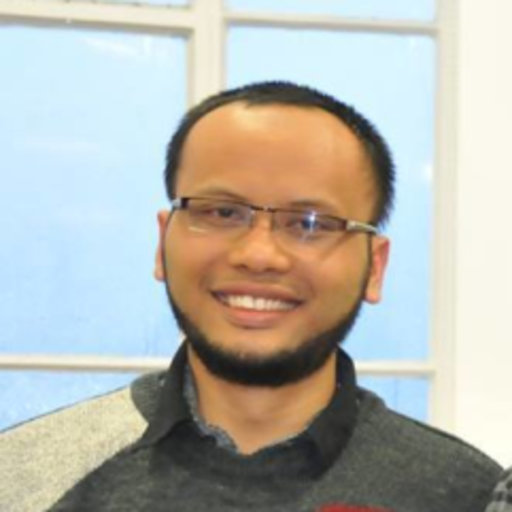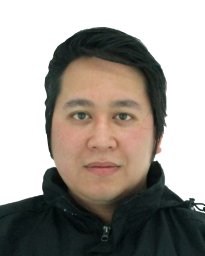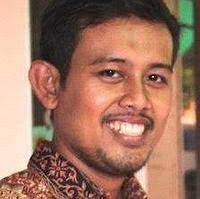The Detection of Past and Future Land Use and Land Cover Change in Ugam Chatkal National Park, Uzbekistan, Using CA-Markov and Random Forest Machine Learning Algorithms
DOI:
https://doi.org/10.23917/forgeo.v38i2.4221Keywords:
LULC, CA-Markov, Uzbekistan, Random ForestAbstract
This comprehensive study investigates land use and land cover (LULC) changes in Ugam Chatkal Na-tional Park, Uzbekistan, over a 30-year period from 1993 to 2022 with Landsat satellite images. Utili-zing advanced CA-Markov and Random Forest machine learning algorithms, it meticulously analyzes historical data to understand past trends and projects future LULC changes. According to remote sen-sing analysis of the past, our findings show the sharp decline of glacier land cover from 2105 km2 to 1334 km2 in the Ugam Chatkal National Park, replaced by tree cover (from 327 km2 in 1993 to 450 km2 in 2022), rangelands (1259 km2 in 1993 to 1355 km2 in 2020), and rocks (from 834 km2 in 1993 to 1390 km2 in 2022). Agriculture, water and bare land witnessed some fluctuations but did not change significantly. At the same time, the region experienced some urbanization, raising the urban area from 50 km2 in 1993 to 90 km2 after 29 years. The article suggests three possible scenarios for the future of the region: “hard”, “soft” and “bad” scenarios. Land cover change predictions are done in TerrSet software with the CA-Markov model for four decades: 2035, 2045,2055 and 2065. Hard and soft sce-narios predict similar patterns for the future: a decline in glacier cover and a rise of tree cover, rock and rangelands, with a slight increase in agriculture and urban classes. Whereas “bad” scenario, which incorporates rapid urbanization and agricultural expansion for the study area, forecasts a climb of the urban area until 415 km2 (8% of the territory) until 2065, and 286 km2 for agriculture.
Downloads
References
Alikhanov, B., Alikhanova, S., Oymatov, R., Fayzullaev, Z., & Pulatov, A. (2020). Land cover change in Tashkent pro-vince during 1992 – 2018. IOP Conference Series: Materials Science and Engineering, 883(1), 012088. doi: 10.1088/1757-899X/883/1/012088
Alikhanov, B., Juliev, M., Alikhanova, S., & Mondal, I. (2021). Assessment of influencing factor method for delineation of groundwater potential zones with geospatial techniques. Case study of Bostanlik district, Uzbekistan. Groundwater for Sustainable Development, 12, 100548. doi: 10.1016/j.gsd.2021.100548
Avila, F. B., Pitman, A. J., Donat, M. G., Alexander, L. V., & Abramowitz, G. (2012). Climate model simulated changes in temperature extremes due to land cover change. Journal of Geophysical Research: Atmospheres, 117(D4), 2011JD016382. doi:10.1029/2011JD016382
Barnosky, A. D., Brown, J. H., Daily, G. C., Dirzo, R., Ehrlich, A. H., Ehrlich, P. R., Eronen, J. T., Fortelius, M., Hadly, E. A., Leopold, E. B., Mooney, H. A., MacknowledgeP., Naylor, R. L., Palumbi, S., Stenseth, N. C., & Wake, M. H. (2014). Introducing the Scientific Consensus on Maintaining Humanity’s Life Support Systems in the 21st Cen-tury: Information for Policy Makers. The Anthropocene Review, 1(1), 78–109. doi: 10.1177/2053019613516290
Belgiu, M., & Drăguţ, L. (2016). Random forest in remote sensing: A review of applications and future directions. ISPRS Journal of Photogrammetry and Remote Sensing, 114, 24–31. doi: 10.1016/j.isprsjprs.2016.01.011
Bradley, A. V., Rosa, I. M. D., Brandão, A., Crema, S., Dobler, C., Moulds, S., Ahmed, S. E., Carneiro, T., Smith, M. J., & Ewers, R. M. (2017). An ensemble of spatially explicit land-cover model projections: Prospects and challenges to retrospectively evaluate deforestation policy. Modelling Earth Systems and Environment, 3(4), 1215–1228. doi: 10.1007/s40808-017-0376-y
Breiman, L. (2001). Random forests. Machine Learning, 45(1), 5–32. doi: 10.1023/A:1010933404324
Chang, Y., Hou, K., Li, X., Zhang, Y., & Chen, P. (2018). Review of Land Use and Land Cover Change research pro-gress. IOP Conference Series: Earth and Environmental Science, 113, 012087. doi:10.1088/1755-1315/113/1/012087
Eastman, J. R., & He, J. (2020). A Regression-Based Procedure for Markov Transition Probability Estimation in Land Change Modeling. Land, 9(11), 407. doi: 10.3390/land9110407
Ebenezer, P. A., Manohar, S., & Sakila, V. S. (2023). Land Use and Land Cover Classification and Changes Detection Using Machine Learning Approaches. In T. Senjyu, C. So–In, & A. Joshi (Eds.), Smart Trends in Computing and Communications. Springer Nature Singapore, 645, 525–535. doi: 10.1007/978-981-99-0769-4_46
ESCOBAR, A. (2012). Encountering development: The making and unmaking of the third World. Princeton University Press.
FAO. (2011). Land degradation assessment in Drylands:Planning and methodological approach, analysis and reporting. Available online https://openknowledge.fao.org/server/api/core/bitstreams/93a768b9-6ef1-44bc-aa37-3e671156 9748/content.
Fu, X., Wang, X., & Yang, Y. J. (2018). Deriving suitability factors for CA-Markov land use simulation model based on local historical data. Journal of Environmental Management, 206, 10–19. doi: 10.1016/j.jenvman.2017.10.012
Gogoi, P. P., Vinoj, V., Swain, D., Roberts, G., Dash, J., & Tripathy, S. (2019). Land use and land cover change effect on surface temperature over Eastern India. Scientific Reports, 9(1), 8859. doi: 10.1038/s41598-019-45213-z
Gómez, C., White, J. C., & Wulder, M. A. (2016). Optical remotely sensed time series data for land cover classification: A review. ISPRS Journal of Photogrammetry and Remote Sensing, 116, 55–72. doi: 10.1016/j.isprsjprs.2016.03.008
Ham, J., Yangchi Chen, Crawford, M. M., & Ghosh, J. (2005). Investigation of the random forest framework for classi-fication of hyperspectral data. IEEE Transactions on Geoscience and Remote Sensing, 43(3), 492–501. doi: 10.1109/TGRS.2004.842481
IPCC. (2022). Climate change 2022: Impacts, adaptation and vulnerability. IPCC.
Jamali, A. A., Behnam, A., Almodaresi, S. A., He, S., & Jaafari, A. (2023). Exploring factors influencing urban sprawl and land-use changes analysis using systematic points and random forest classification. Environment, Deve-lopment and Sustainability, 26, 13557–13576. doi: 10.1007/s10668-023-03633-y
Juliev, M., Jumaniyazov, I., Togaev, I., Toshtemirov, Sh., Samiev, A., Ochilov, I., Usmanov, K., & Saidova, M. (2023). Land degradation in Central Asia: A review of papers from the Scopus database published in English for the period of 2000-2020. E3S Web of Conferences, 462, 03020. doi: 10.1051/e3sconf/202346203020
Juliev, M., Pulatov, A., Fuchs, S., & Hübl, J. (2019). Analysis of Land Use Land Cover Change Detection of Bostanlik District, Uzbekistan. Polish Journal of Environmental Studies, 28(5), 3235–3242. doi: 10.15244/pjoes/94216
Karimov, Y., Musaev, I., Mirzababayeva, S., Abobakirova, Z., Umarov, S., & Mirzaeva, Z. (2023). Land use and land cover change dynamics of Uzbekistan: A review. E3S Web of Conferences, 421, 03007. doi: 10.1051/e3sconf/202342103007
Kayet, N., Pathak, K., Chakrabarty, A., & Sahoo, S. (2016). Urban heat island explored by co-relationship between land surface temperature vs multiple vegetation indices. Spatial Information Research, 24(5), 515–529. doi: 10.1007/s41324-016-0049-3
Kesaulija, F. F., Aipasa, M. I., Sumaryono, & Suhardiman, A. (2023). Land use and land cover change in Manokwari, West Papua Province. IOP Conference Series: Earth and Environmental Science, 1192(1), 012045. doi: 10.1088/1755-1315/1192/1/012045
Keshri, A. K., Shukla, A., & Gupta, R. P. (2009). ASTER ratio indices for supraglacial terrain mapping. International Journal of Remote Sensing, 30(2), 519–524. doi: 10.1080/01431160802385459
Lioubimtseva, E., & Henebry, G. M. (2009). Climate and environmental change in arid Central Asia: Impacts, vulnera-bility, and adaptations. Journal of Arid Environments, 73(11), 963–977. doi: 10.1016/j.jaridenv.2009.04.022
Mahmood, R., Pielke, R. A., Hubbard, K. G., Niyogi, D., Dirmeyer, P. A., McAlpine, C., Carleton, A. M., Hale, R., Game-da, S., Beltrán‐Przekurat, A., Baker, B., McNider, R., Legates, D. R., Shepherd, M., Du, J., Blanken, P. D., Frauenfeld, O. W., Nair, U. S., & Fall, S. (2014). Land cover changes and their biogeophysical effects on cli-mate. International Journal of Climatology, 34(4), 929–953. doi: 10.1002/joc.3736
Mustard, J. F., Defries, R. S., Fisher, T., & Moran, E. (2012). Land-Use and Land-Cover Change Pathways and Impacts. In G. Gutman, A. C. Janetos, C. O. Justice, E. F. Moran, J. F. Mustard, R. R. Rindfuss, D. Skole, B. L. Turner, & M. A. Cochrane (Eds.), Land Change Science, 6, 411–429. doi: 10.1007/978-1-4020-2562-4_24
Petrov, M. A., Sabitov, T. Y., Tomashevskaya, I. G., Glazirin, G. E., Chernomorets, S. S., Savernyuk, E. A., Tutubalina, O. V., Petrakov, D. A., Sokolov, L. S., Dokukin, M. D., Mountrakis, G., Ruiz-Villanueva, V., & Stoffel, M. (2017). Glacial lake inventory and lake outburst potential in Uzbekistan. Science of The Total Environment, 592, 228–242. doi:10.1016/j.scitotenv.2017.03.068
Sales, M. H. R., De Bruin, S., Souza, C., & Herold, M. (2022). Land Use and Land Cover Area Estimates From Class Membership Probability of a Random Forest Classification. IEEE Transactions on Geoscience and Remote Sensing, 60, 1–11. doi: 10.1109/TGRS.2021.3080083
Sang, L., Zhang, C., Yang, J., Zhu, D., & Yun, W. (2011). Simulation of land use spatial pattern of towns and villages based on CA–Markov model. Mathematical and Computer Modelling, 54(3), 938–943. doi: 10.1016/j.mcm.2010.11.019
Secretariat of the World Meteorological Organization. (2003). The second report on the adequacy of the Global Obser-ving System for Climate Support of the UNFCC, GCOS-82. Secretariat of the World Meteorological Organiza-tion.
Subedi, P., Subedi, K., & Thapa, B. (2013). Application of a Hybrid Cellular Automaton – Markov (CA-Markov) Model in Land-Use Change Prediction: A Case Study of Saddle Creek Drainage Basin, Florida. Applied Ecology and Environmental Sciences, 1(6), 126–132. doi: 10.12691/aees-1-6-5
The World Bank. 2022. Population, total – Uzbekistan. Retrived from https://data.worldbank.org/indicator/SP.POP.TOTL?locations=UZ.
UN. (2019). Sustainable Development Goals Report. Available online https://unstats.un.org/sdgs/report/2019/The-Sustainable-Development-Goals-Report-2019.pdf.
Wang, Q., Wang, H., Chang, R., Zeng, H., & Bai, X. (2022). Dynamic simulation patterns and spatiotemporal analysis of land-use/land-cover changes in the Wuhan metropolitan area, China. Ecological Modelling, 464, 109850. doi: 10.1016/j.ecolmodel.2021.109850
Wolfram, S. (1984). Cellular automata as models of complexity. Nature, 311(5985), 419–424. doi: 10.1038/311419a0
Zhang, Z., Hörmann, G., Huang, J., & Fohrer, N. (2023). A Random Forest-Based CA-Markov Model to Examine the Dynamics of Land Use/Cover Change Aided with Remote Sensing and GIS. Remote Sensing, 15(8), 2128. doi: 10.3390/rs15082128
Downloads
Submitted
Accepted
Published
Issue
Section
License
Copyright (c) 2024 Bokhir Alikhanov, Bakhtiyor Pulatov, Luqmon Samiev

This work is licensed under a Creative Commons Attribution 4.0 International License.

















